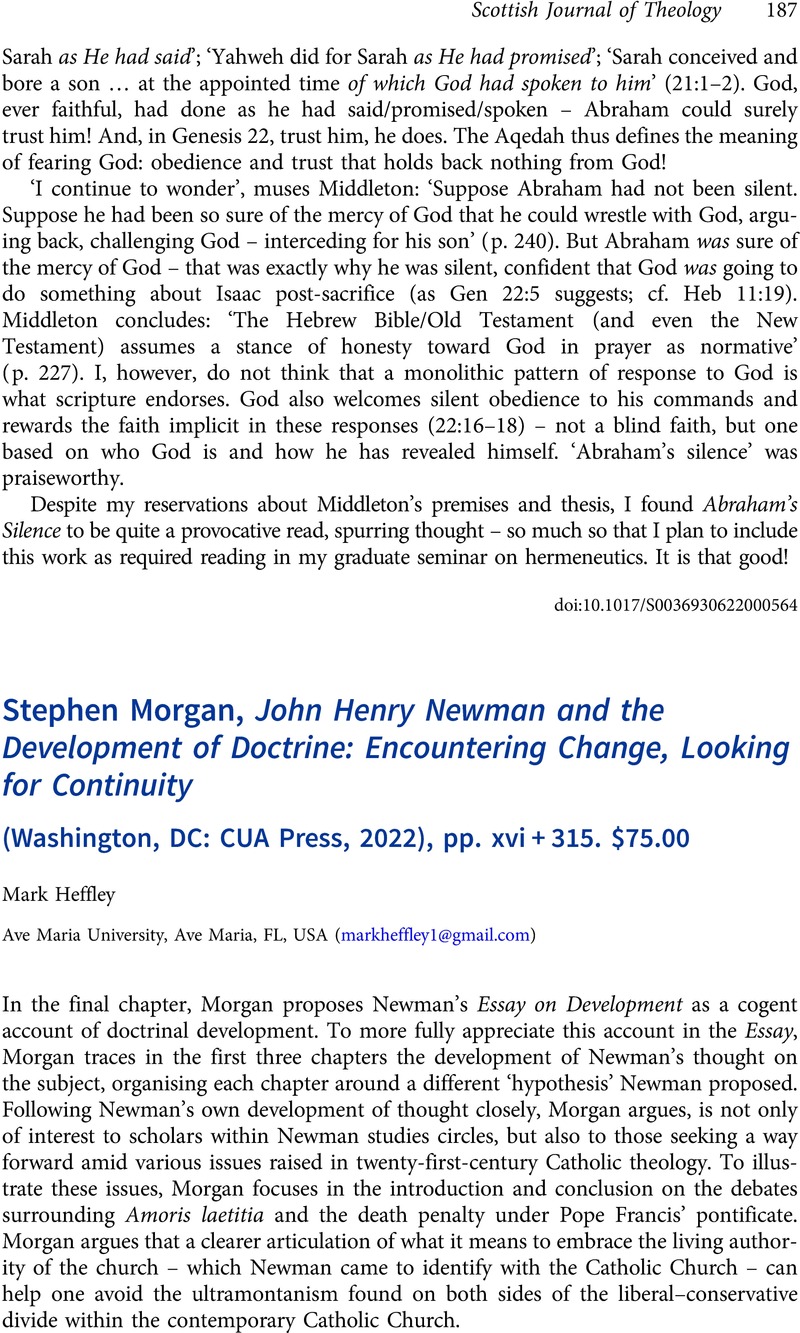No CrossRef data available.
Article contents
Stephen Morgan, John Henry Newman and the Development of Doctrine: Encountering Change, Looking for Continuity (Washington, DC: CUA Press, 2022), pp. xvi + 315. $75.00
Review products
Stephen Morgan, John Henry Newman and the Development of Doctrine: Encountering Change, Looking for Continuity (Washington, DC: CUA Press, 2022), pp. xvi + 315. $75.00
Published online by Cambridge University Press: 10 March 2023
Abstract
An abstract is not available for this content so a preview has been provided. Please use the Get access link above for information on how to access this content.

- Type
- Book Review
- Information
- Copyright
- Copyright © The Author(s), 2023. Published by Cambridge University Press



